It has been a hot minute since I wrote about tools. I’ve got a ton of emails to answer, too much to do, and a lot of work on the Electric Zine Maker that needs doing but… I’ll just make a moment to finally talk about tools and digital art again!
These links aren’t going to share themselves.
Before I begin, here is some recommended reading:
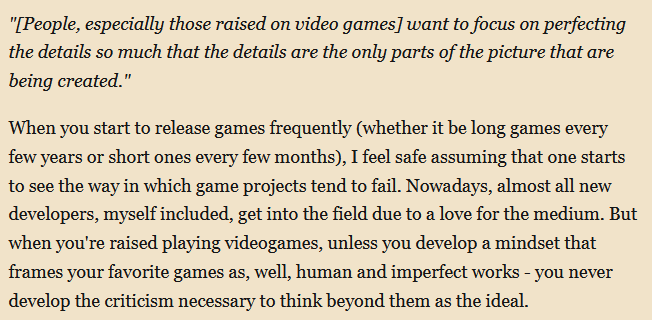
Parasocial Nintendo Complex: 10 Years of Game Dev by Melos Han-Tani
My Procreate Curl Brushes Are HERE!! I made over 50+ different coil, curl, kinky, and wavy texture brushes! I also made more outline braid brushes, and lashes, edges.
Check them out in my bio! ? pic.twitter.com/znaXWJBT0C
— Brushes in Bio!! • Vegalia (@byvegalia) June 18, 2021
And please check out these brushes by By. Vegalia, and then give the Open Source Afro Hair Library a follow, because that’s all meaningfully important work.
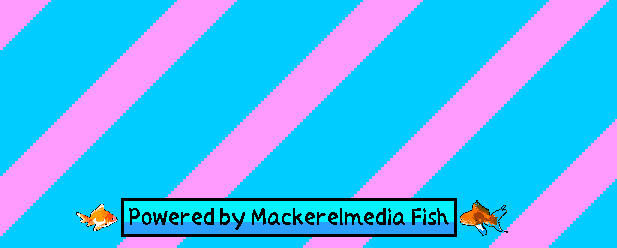
As the title suggests… I’ve been thinking a lot about the ephemeral nature of digital art.
I think it’s fascinating how certain art will outlive the tools it was made in, or some tools will outlive the art… with formats once supported in that tool just dying out and no longer being something you can even see.
For example, Flash work still exists on the web. Remnants of that era will always be there, nothing truly dies out entirely, but it is invisible to us as some forgotten footprint.
…And sometimes the output survives longer than the tool itself, making it almost a relic of some lost object.
I still have 320×240 Quicktime videos on my desktop of “viral videos” that I saved from before YouTube.
You could still find things made in MS Paint, on the internet, but MS Paint itself is marked as deprecated. Art I made in Dabbler (the old painting program) still exists on floppy disks somewhere in storage in one of the apartments that I used to live in… If someone posted those, then there would be that tiny echo that I contributed to, of some moment in software history.
It’s interesting how these things die out, and what exactly remains… The way it stays, what aspects of it stay, how we remember…
Movies, and music, seem to have a longer life span than software because the formats are less arbitrary. Software however is weird, cryptic, proprietary, doomed to constantly shift and deprecate with the landscape of the web, mobile devices, or desktop.
Games occupy a fragile place in all this. I often bring that up. Games made by smaller developers just five years ago, even the ones that had some kind of impact and were generously talked about in their time, fade into obscurity. The many updates to Unity since, make accessing the source code an impossible nightmare. They take too much work to maintain. Slowly the game files themselves just vanish…
It’s interesting to me how we form a history of that. What we choose to remember. What is forgotten from once thriving creative movements.
I think, maybe even resentfully… the games that had the biggest marketing budgets, where the developers had the most connections and “ins” in the industry, will be the ones remembered. The ones made by smaller devs, those that make up the bulk of what you could consider the present day indie and altgame movement, will be lost.
It’s bittersweet. Part of me hopes that maybe our priorities can shift. That we would preserve those “little things” too, because that would paint a more accurate picture.
Either way, digital art is ephemeral. It does not last. Maybe it can’t because it’s so tied to the capitalist mentalities of technology (iterate, deprecate, force them to update, etc)…
I love reflecting on all that tho, because of how it can have an influence on your work. Even as a narrative, or the fictional world you build, that type of interpretation of “nostalgia” over what is lost is interesting. I enjoy seeing what we choose to remember. I also wonder how this era of computer, internet, and game culture, is going to be creatively interpreted when its gone.
So I mean, that’s on my mind lately… What I do appreciate about all this is the small tools that occupy this space. The one-off creative things that let people output something tiny and strange, that they forget about after saving it to their drive.
For example…
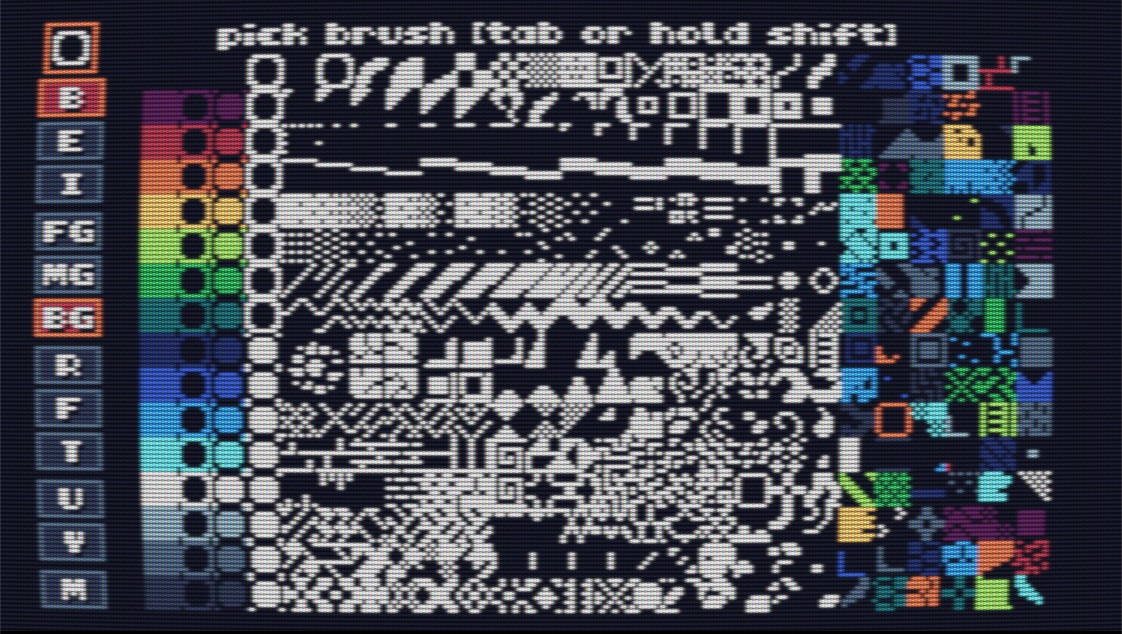
Natsukashii v1.2 is a delightful example of this. It’s a browser tool that lets you draw with ASCII like characters, and has this retro CRT effect applied to whatever art you make in it. The art is super specific to it. It has a unique look inspired by the creative direction of the person that made it. I saw people on Twitter really getting into it. Anything done in it is uniquely a product of it.
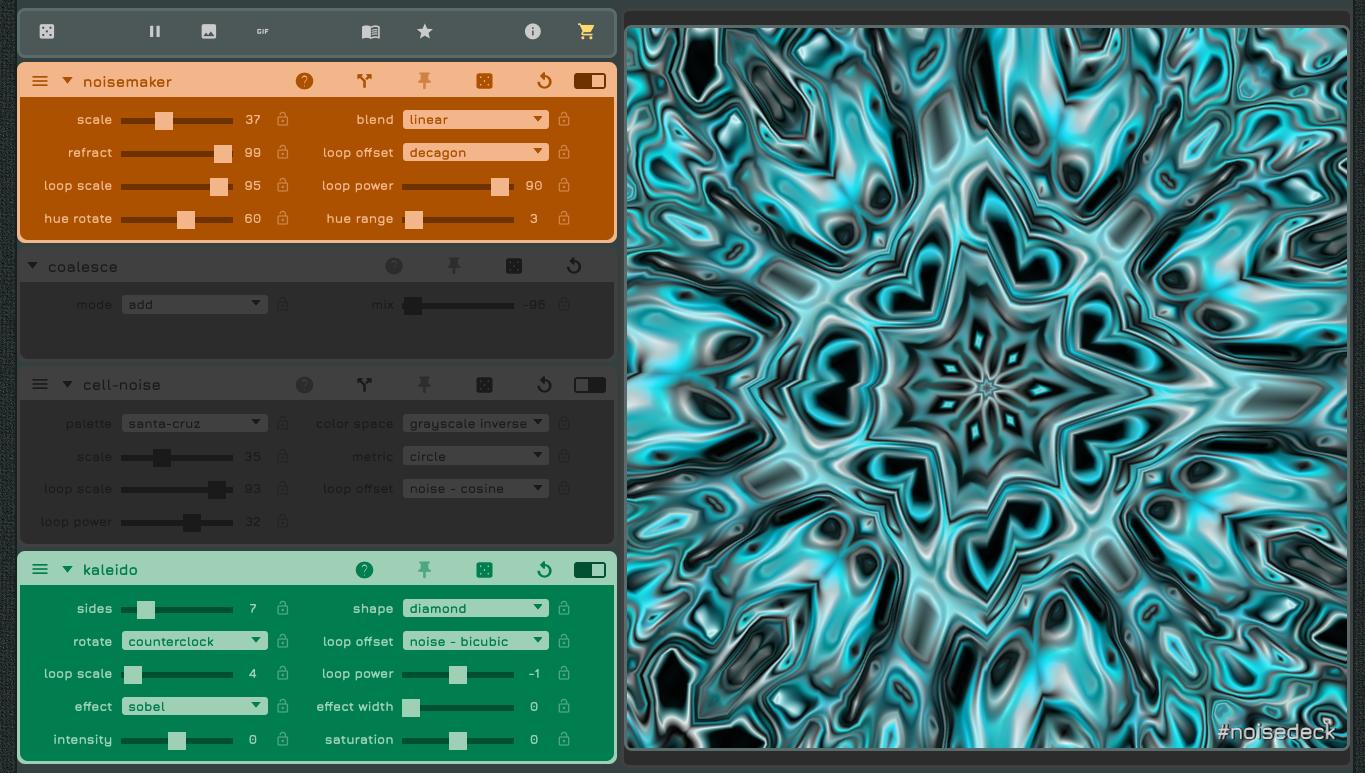
Noisedesk is a virtual console for mixing visual noise. It generates interesting and strange glitchy art. You’re given a lot of sliders, options, tabs, and drop down menus to manipulate values… the thing you create is moving next to the generous UI. The art made in Noisedesk is as equally unique to it, as it is to our current conceptions of glitch art.
I say “current conceptions of glitch art” because even what we consider “glitch” keeps changing with technology. Older ideas of “glitch” might have been VCR degradation, CRT degaussing… Now we have this type of pixel distortion.
Whatever you produce in tools like this is a footprint of this time.
Similar to Noisedesk is Photomosh, a tool that lets you glitch images, videos, or your webcam… and then output as images, gif, or video.
A fun older find is Scott Pakin’s Random Art Generator that lets you make generated images, with an option to make those tile-able… Since, you know, you might want that as a tile-ing background for your pre-web2.0 website.
Painting Software by Travess Smalley is fun too. It’s like a browser based MS Paint with weird extras specific to whatever the developer felt was interesting.
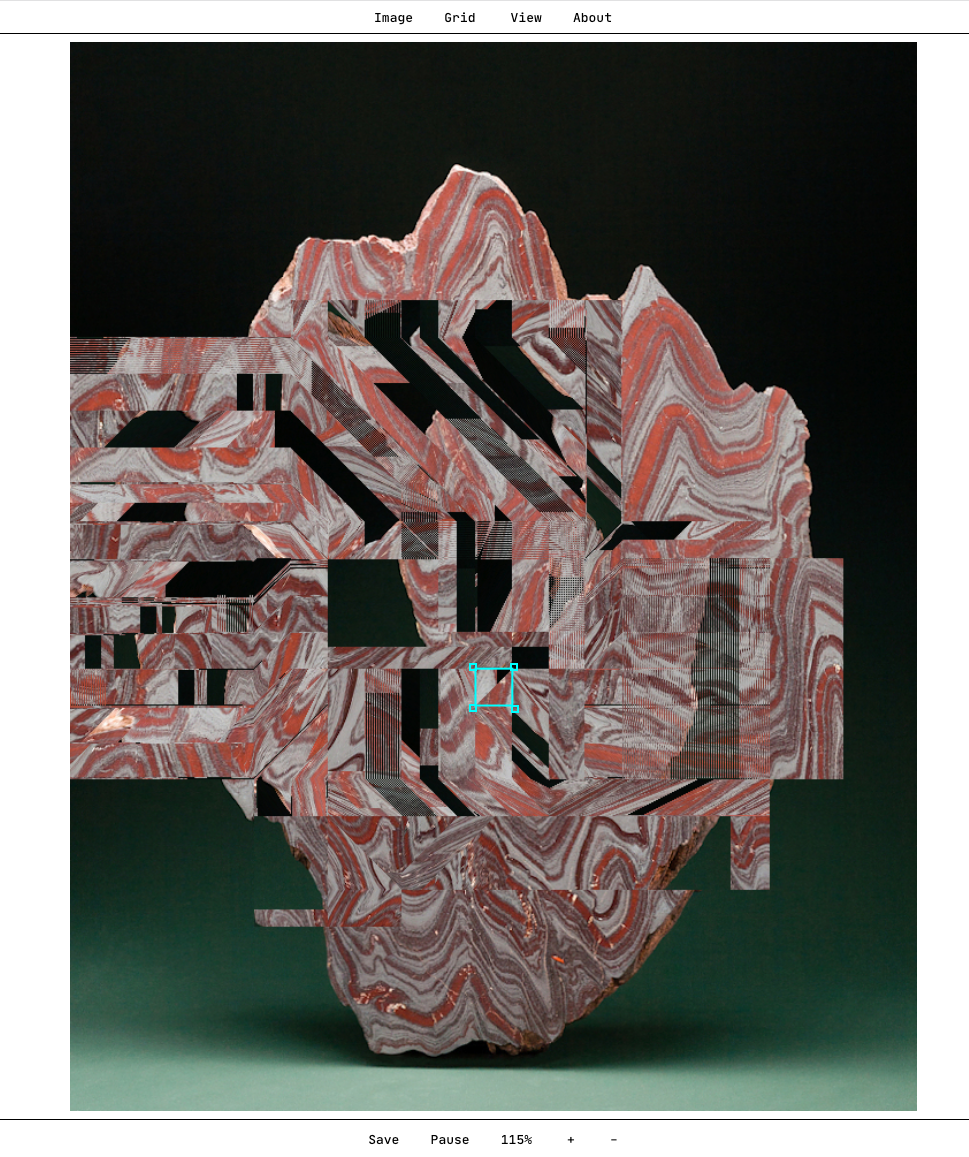
Flow is another one that I REALLY love as an example to all this. It’s as niche as it is unique. It’s an “image editor” that lets you distort pixels in any direction that you set. The image shifts and moves based on what area you select, and what direction you want it to shift.
It lets you control a very specific image effect, and you save whatever you make as an image.
I love it because it’s so specific. If this tool slowly deteriorates, and inevitably vanishes, I can see someone re-discovering images of what they made in it on a drive somewhere. The tool being gone, but the strange outputted art still existing.
It’s kind of iconic to this type of tools. Not “big” enough to be maintained by a major corporation, but just small enough to be some one-off thing that takes up meaningful space before disappearing.
Check out a cool new app for painting in VR:https://t.co/fXKk3WwC8M#vr #oculus #virtualreality #design #art #painting #digitalart pic.twitter.com/KdMv0RLiwr
— 80 LEVEL (@80Level) May 14, 2021
See also Sripegenerator and Tartanmaker for very old art that was a trend in web design once. In this case the trend is gone but these generators still exist, slowly deteriorating, forgotten in their corner of the internet.
…Or Max Bittker’s Broider a generator for making 9-patch borders. It outputs code that you copy/paste for use in your CSS.
Ok, so… That’s most of my hoarded links. I feel like, in their own way, they illustrate how easily these tools are lost. I see so many of them on Twitter or itch.io that it’s hard to keep track of them.
They die out so fast, sometimes an update to the browser can just break everything, but those little things that you made in them last. Some echo shared in a tweet with “look what I made in this small tool!” or buried on your drive.
I feel like THAT is what it’s all about. Letting people make strange things that mean something to them, that kind of offer a way of remembering that moment in time.
The tool vanishes, but the work made in it doesn’t.
I think the zines made in the Electric Zine Maker will certainly outlive the tool.
Like there’s a couple of zines that were made in the Electric Zine Maker that someone posted to the Internet Archive.
I kind of fantasize that, when the Electric Zine Maker is no longer around, someone will find these zines and try to look up the strange tool they were made in.
All that will be left of the tool is Let’s Plays on Youtube or the screenshots of it.
It’s all about how these things occupy our digital memory.
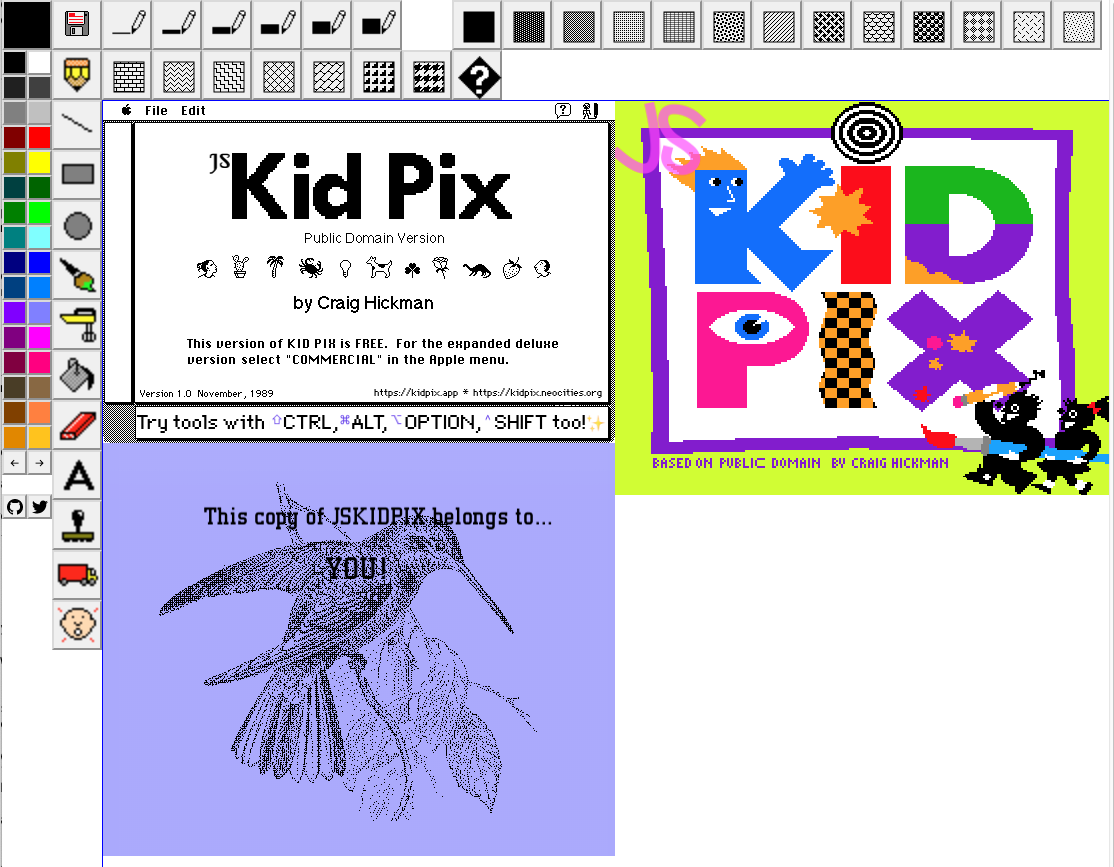
Kidpix was recently ported to the browser, as a browser app.
It’s lots of fun to play around in!
What I think is most fascinating about it is that this version is slightly less true to the original. Porting it to the browser means that you have to make it work inside the browser. Small compromises made here and there, and it’s slightly more removed from what it once was… then it even preforms differently across different browsers.
If this KidPix browser port were lost (by some update to browsers, or if we completely changed how we interface with the web), and someone else re-created this KidPix browser port from memory in whatever new thing we are using… it would again be slightly different.
So the way we preserve these things, even keeping them relevant by rebuilding them, becomes almost like folk songs (or folk stories) told by word-of-mouth. Things change based on who is telling them. The original slowly fading into a memory that might not even truly reflect what it once was.
I recently came across BBC BASIC for SDL 2.0
“BBC BASIC for SDL 2.0 (BBCSDL) is an entirely free advanced cross-platform implementation of BBC BASIC for Linux (x86 CPU only), MacOS, Raspberry Pi (Pi OS), Windows, Android, iOS or for running in a browser.”
Which I think is also interesting, and I really want to work it into this post, so here you have it!
Emulation is fascinating for how it fits into all this too. The games or software aren’t necessarily rebuilt from the ground up to be shoehorned into a new format (web, mobile, modern desktops)… but, instead, the old stuff runs in some box that roughly simulates an era.
I like how even then you have these details that get lost.
A friend of mine was talking about how emulation never really truly emulates an era. For example, if you wanted the full experience of SNES games, you would need an old TV, and sit on an old 90’s living room floor, and be surrounded by things from that era… all that being important because the console (system, games…) are products of that time. Can we ever really enjoy, or understand their significance, when they’re taken out of that space and just emulated in modern contexts?
It kind of reminds me of vinyl record enthusiasts… THAT music from that time somehow “just sounds better” when on the original systems.
Take what you will from all that, but I appreciated the train of thought because digital art is getting the same arguments. I guess it means it’s grown up enough to be that important to people.
My last example, one in a million in terms of an example like this, is the BBC Micro Bot.
“BBC Micro bot runs your tweet on an 8-bit computer emulator. Tweet-sized programs are written in BBC BASIC – a language created by Sophie Wilson in 1981 for the BBC Micro.”
…When tools, or art generation, grow to exist specifically in symbiosis with social media platforms like Twitter.
These come and disappear so quickly, with every change to the policy of the platform holder. Artistic Twitter bots are frequently lost whenever Twitter “changes something”.
It’s an interesting microcosm in digital art. A change to desktop computers wipes out an entire history of software, but people have an easier time preserving that history. There are still ways of keeping those older programs running.
The browser changes something and destroys an entire history of websites. There’s no way of keeping that accessible unless the creator makes the changes needed in order to keep that work accessible.
Art bots occupy an even more precarious space. Their lifespan is short. When they die, the account either stays as some forgotten relic, or vanishes entirely (like getting banned).
Even in cases of an art bot, I don’t think anyone really does Lets Plays of them, or shares screenshots of them outside of the social media space that they live in… so they don’t really enjoy life outside of that very specific context.
I think it’s interesting to mention that because social media is SUCH a big and important part of our lives. Of course art is going to meaningfully exist on it… but the art is so impermanent, it’s already dead as soon as it’s posted.
Preservation for projects like these are impossible, unless they are created in an entirely different context. Sure you can save your Twitter history, but why? Does Twitter outside of Twitter make sense, even in context of an art project?
It’s interesting to me because social media and the art made on it is so popular right now, will there be throwbacks to all that? Will this be part of our nostalgia? Or is it too short lived to ever be properly remembered?
I’m both stressed by how easy it is to lose this stuff (it’s so much work to maintain!), but also appreciate the fact that people make it despite knowing how impermanent it is.
Echoes of it will stay, slowly deteriorating. Any digital art, of any era, will never really exist again in its true intended form.
So… these have been my most recent finds. Please check them out and share what you made in it. You might end up seeing it again years from now, and fondly remember the time you shared with that tiny tool.
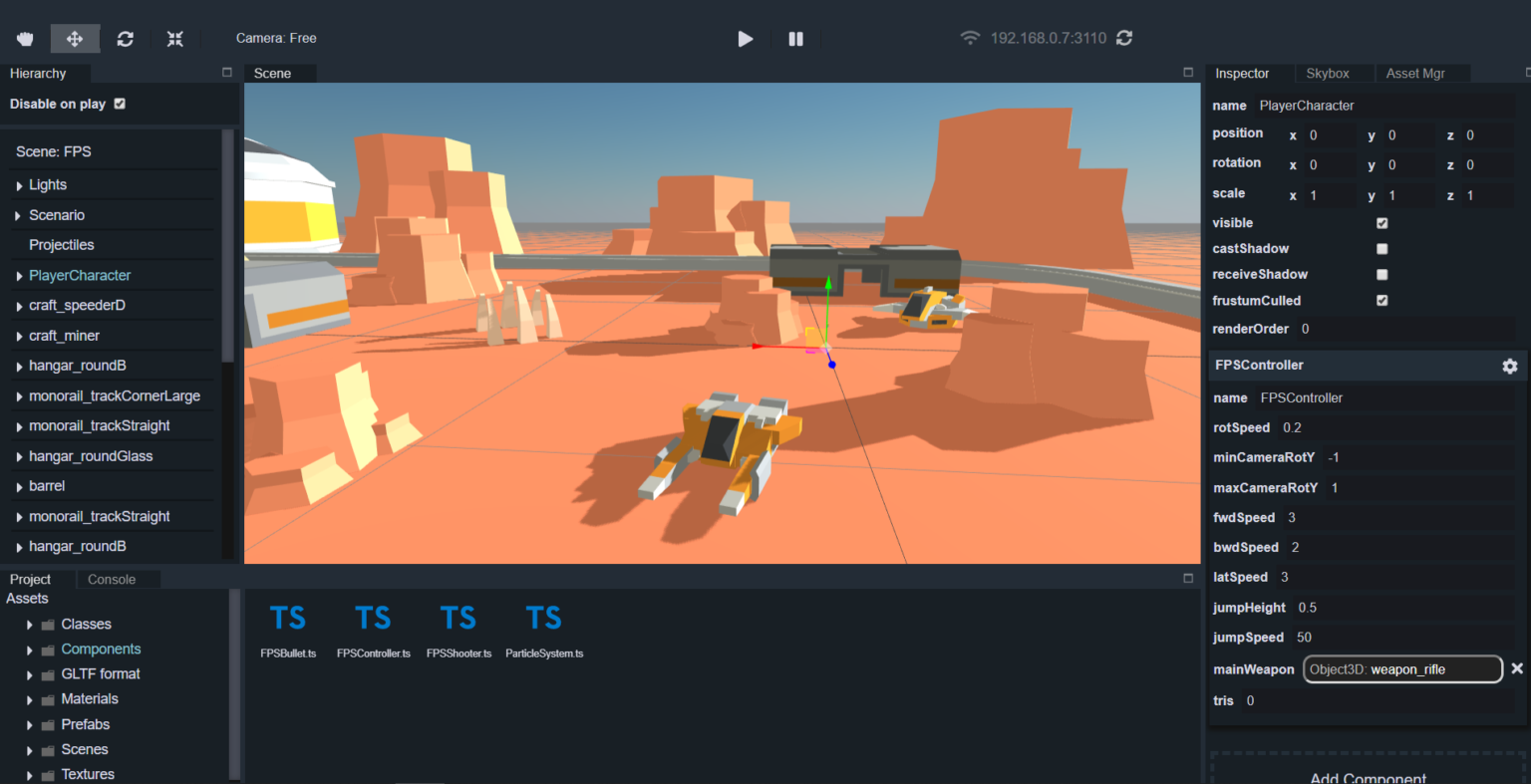
Also, Rogue Engine was recently released. It’s an editor and environment for making web games and apps using three.js. It’s new and looks interesting. If you’re looking for something else to make games in, maybe go check that out too!
More on tools…
https://emreed.net/CC_Class.html
More of my writing on tools…
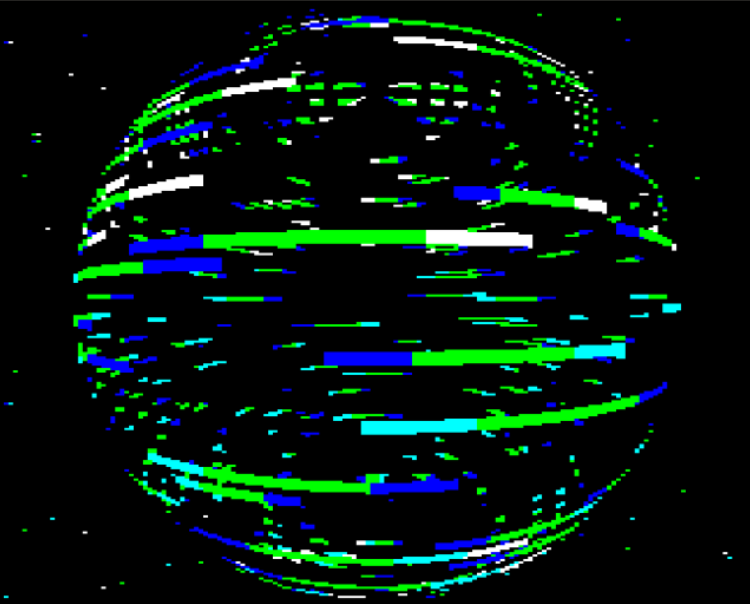
Love this! Inspired by your work on tiny tools, I’ve gotten into a habit of collecting mine over the last year.
It’s been very liberating not having to rely on big companies to make art, and get inspired by the infinite array of making “art” in the digital medium.
Thank you for your work.
Thank you, Deniz! I’m glad to hear that this work has been inspiring to you! :D
<3